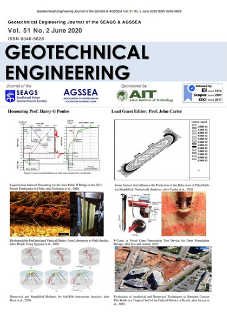Evaluation of Analytical and Numerical Techniques to Simulate Curtain Pile Walls in a Tropical Soil of the Federal District of Brazil
Main Article Content
Abstract
This paper is fruit of an active interaction between several universities/academics and the University of Brasília. It has focus on the design of retaining walls. This design is increasingly present in engineering projects for urban areas, given their continuous development. In the Federal District of Brazil, many retaining walls are built in order to optimize space. These excavations need retaining works in order to maintain the terrain in place and to avoid any collapse. The aim of this paper is to tentatively assess the behavior of retaining structures made of “pile curtain” by using existing commercial finite element (F.E.) and “winkler spring” type softwares. The case study is characterized by a 13m deep excavation founded in the well-known porous clay of Brasilia. The excavation´s instrumentation provided displacements along depth, used to evaluate the structure´s behavior. In terms of the approach by using a winkler type software, the best technique to evaluate the subgrade reaction coefficient (modulus) was an empirical equation presented by Bowles (1988). For the numerical predictions with finite element method, the Hardening Soil model tended to show a slight better result when compared to the traditional Mohr Coulomb model. It is concluded that simple techniques, and experience of the engineer, are sometimes fundamental to better simulate such types of structure founded on complex unsaturated tropical soils.
Article Details

This work is licensed under a Creative Commons Attribution-NonCommercial-NoDerivatives 4.0 International License.
Copyright © 2019 Association of Geotechnical Societies in Southeast Asia (AGSSEA) - Southeast Asian Geotechnical Society (SEAGS).


